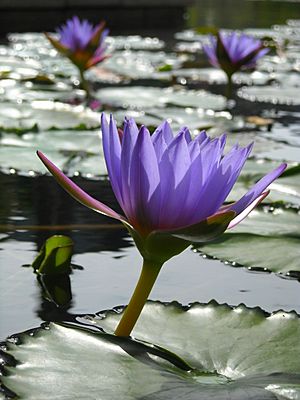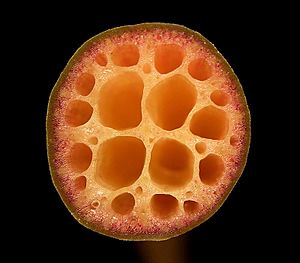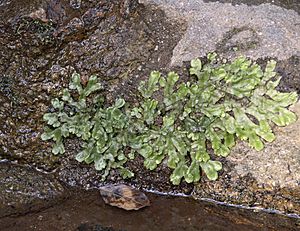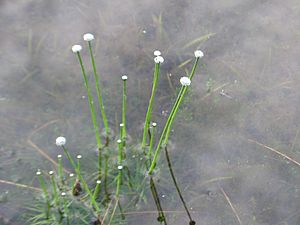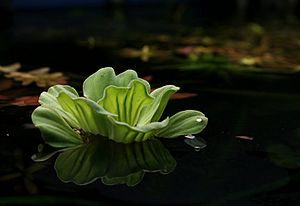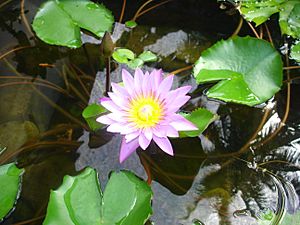Aquatic plant facts for kids
Aquatic plants are special plants that have learned to live in water. They can be found in freshwater places like rivers and lakes, in saltwater like the sea, or in brackish water (a mix of fresh and salt water) found in river estuaries.
These plants are also called hydrophytes or macrophytes. This helps us tell them apart from tiny algae. A macrophyte is a plant that grows in or near water. It can be sticking out of the water, completely under water, or floating on top. In lakes and rivers, these plants are super important! They give fish places to hide, provide a home for tiny water invertebrates, make oxygen for other living things, and are food for some fish and wildlife.
Some aquatic plants are only partly under water, while others are totally submerged. They have cool ways to live in water, like leaves that float on the surface. They also have special tissues that help them move air and other gases around inside the plant.
Contents
How Aquatic Plants Grow

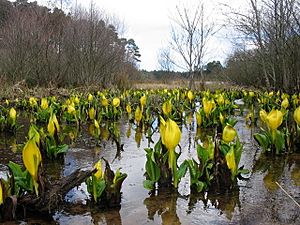
Aquatic plants can be grouped by how they grow in the water:
- Emergent plants: These plants grow in water but stick out into the air.
- Submerged plants: These plants grow completely under water.
- Floating-leaved plants: These plants are rooted at the bottom, but their leaves float on the water surface.
- Free-floating plants: These plants float freely on the water surface and are not attached to the bottom.
Emergent Plants
An emergent plant is one that grows in water but pushes its leaves and stems above the surface into the air. All these plants together are called emergent vegetation.
Plants might grow this way because their leaves can make food (through photosynthesis) better in the air. Also, their flowers can be pollinated by wind or flying insects when they are above the water.
Many types of plants are emergent. Some examples include reeds (like Phragmites), Cyperus papyrus, Typha species (also known as cattails), flowering rush, and wild rice. Some plants, like purple loosestrife, can grow as emergent plants in water, but they can also grow well in wet or damp ground.
Submerged Plants
Submerged macrophytes grow completely under water. Some are rooted to the bottom, while others float freely without any roots.
Helophytes are a type of plant that grows in a marsh or wet area. They are partly under water, and new parts of the plant grow from buds below the water surface. You often see helophytes growing in tall groups along the edges of rivers and lakes.
Floating-leaved Plants
Floating-leaved macrophytes have roots that are attached to the bottom of the water. However, their leaves float right on the water's surface. Common examples of these plants are water lilies (from the family Nymphaeaceae) and pondweeds (from the family Potamogetonaceae).
Free-floating Plants
Free-floating macrophytes are aquatic plants that float on the water's surface. Their roots are not attached to the bottom, sediment, or any part of the water body. They can easily be moved around by the wind. These plants can sometimes create places where mosquitoes like to lay their eggs. An example is Pistia species, often called water lettuce or water cabbage.
Images for kids
-
The beautiful flower of Nymphaea alba, a type of water lily
-
A bud of Nelumbo nucifera, also known as the lotus flower
See also
 In Spanish: Planta acuática para niños
In Spanish: Planta acuática para niños


